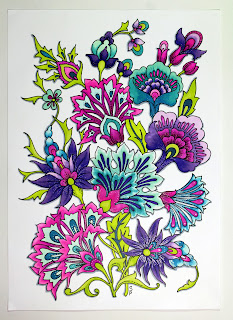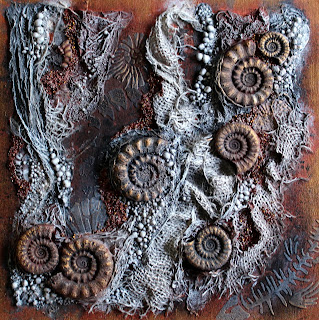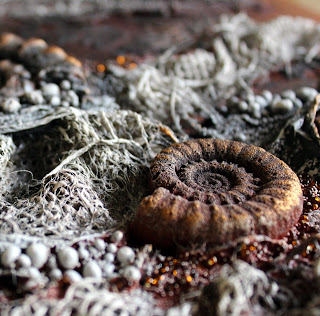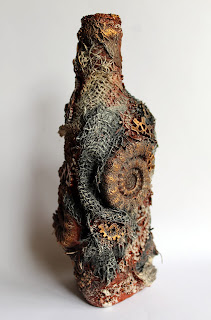Materials:
- Floral Harmony and sentiment from Spring Bird Daffodil stamp set
- White card blank and stamping card
- Inkpad: Distress Ink (Chipped Sapphire)
- Glycerine (from chemist)
- Fine tipped pen (blue)
- PVA pearls
- Strip of net ribbon (coloured blue with alcohol marker)
- Decorative die to cut stamping plate (Tonic)
- I coloured the card blank blending colour onto the card using a sponge and Distress Ink. The card was not designed for blending ink so I used the trick from Sheen Douglass adding a little glycerine to my sponge before adding ink. This enabled it to blend out much more easily.
- I cut out the stamping plate and blended ink in from the edges. I also added faux stitching around the topper and card blank with the fine pen.
- The image and sentiment were stamped with Distress Ink. I then used a damp brush to drag out the colour. Where needed I added further colour picking up ink from my craft mat.
- The topper was added to the card blank with 3D foam for added depth and dimension. Finished with ribbon and PVA pearls.



























